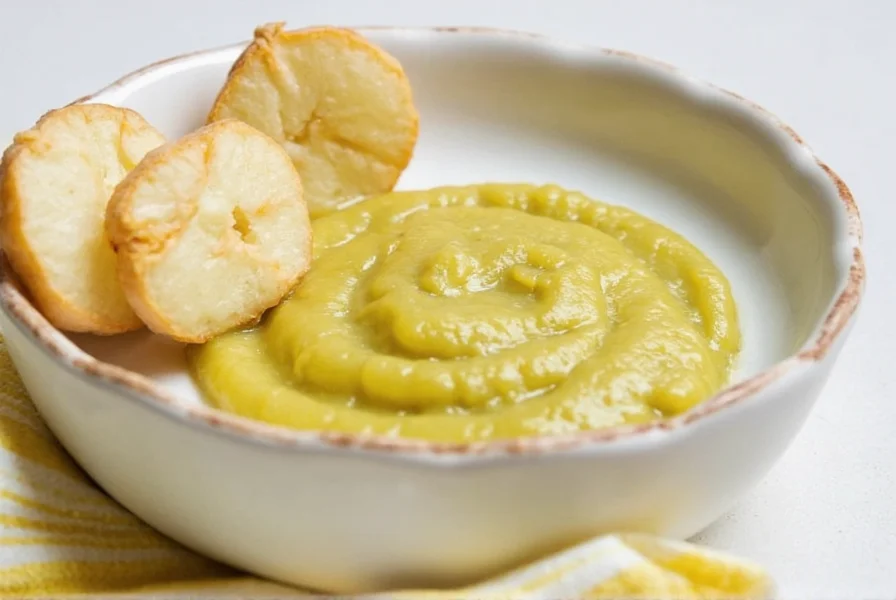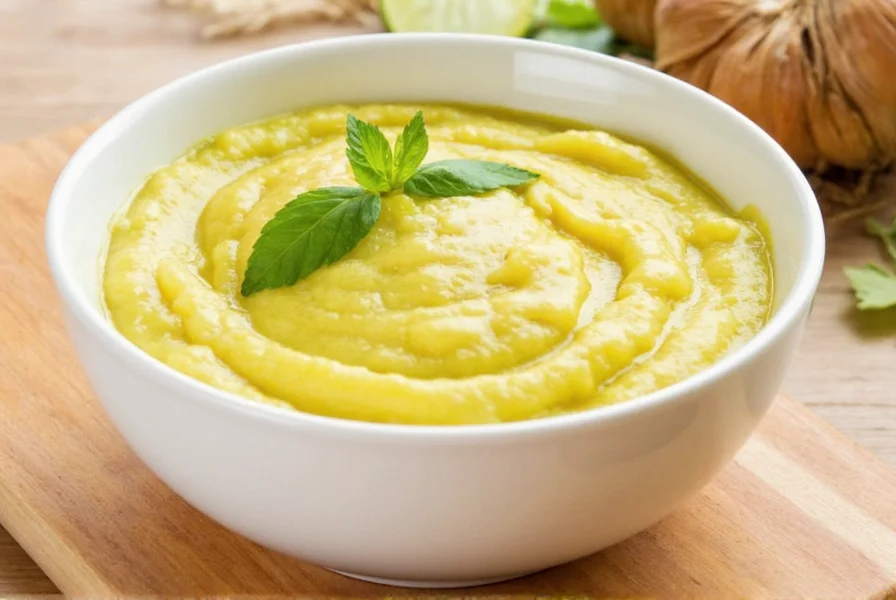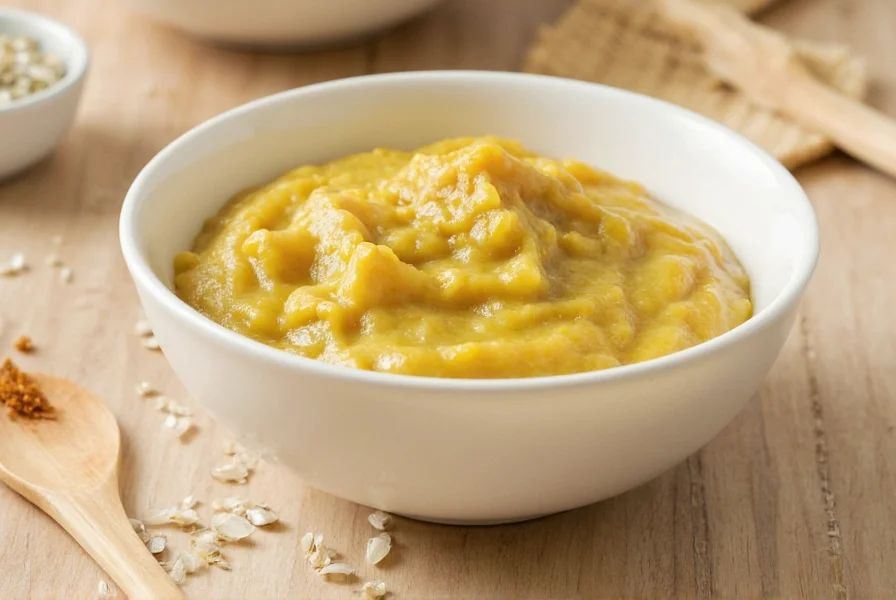Creating your own ginger garlic paste transforms everyday cooking by providing instant access to this essential flavor base without the tedious preparation of peeling and mincing individual cloves and roots. Unlike store-bought versions that often contain preservatives and fillers, homemade ginger garlic paste delivers superior freshness and control over ingredients. This simple preparation method preserves the natural enzymes and volatile compounds responsible for both the distinctive taste and numerous health properties associated with these powerful alliums.
The Culinary Advantages of Ginger Garlic Paste
Professional chefs and home cooks alike rely on ginger garlic paste as the cornerstone of flavor development in countless recipes. When heated in oil, the paste undergoes the Maillard reaction, creating complex flavor compounds that form the foundation of curries, marinades, and stir-fries. The paste's liquid consistency allows for even distribution throughout dishes, ensuring consistent flavor in every bite—a significant advantage over unevenly chopped fresh ingredients.
Unlike powdered alternatives that lose volatile oils during processing, fresh ginger garlic paste maintains the full spectrum of aromatic compounds. This preservation of essential oils translates to more vibrant, authentic flavors in your cooking. The paste also emulsifies beautifully with other liquids, creating stable bases for sauces that won't separate during cooking.
Step-by-Step Homemade Ginger Garlic Paste Recipe
Creating professional-quality ginger garlic paste requires attention to ingredient ratios and preparation techniques. Follow this precise method for optimal results:
| Ingredient | Measurement | Preparation Notes |
|---|---|---|
| Fresh ginger root | 1 cup, peeled | Choose firm, smooth roots without wrinkles |
| Fresh garlic cloves | 1 cup, peeled | Select plump cloves without green sprouts |
| Neutral oil or water | 2-3 tablespoons | Oil extends shelf life; water keeps it oil-free |
| Acid (optional) | 1 teaspoon lemon juice or vinegar | Helps preserve color and freshness |
Preparation method: Cut ginger into small chunks for easier processing. Separate garlic cloves and remove skins. Combine ingredients in a high-powered blender or food processor. Begin with minimal liquid and gradually add more only as needed to achieve a smooth, spreadable consistency—similar to tomato paste. Process for 2-3 minutes until completely smooth with no visible fibers.
For extended shelf life, sterilize glass containers by boiling or using a dishwasher's sanitize cycle. Fill containers leaving ½ inch headspace, then top with a thin layer of oil to create an oxygen barrier. Properly stored, your homemade ginger garlic paste maintains peak quality for 3-4 weeks in the refrigerator or up to 6 months when frozen in ice cube trays for convenient portioning.

Optimal Storage Techniques for Maximum Freshness
Understanding proper storage methods significantly extends the shelf life of your ginger garlic paste while preserving flavor integrity. The key factors affecting longevity are oxygen exposure, temperature, and moisture content:
- Refrigeration: Store in airtight containers with oil layer on top; lasts 3-4 weeks
- Freezing: Portion into ice cube trays, then transfer to freezer bags; maintains quality for 6 months
- Room temperature: Not recommended due to rapid oxidation and potential bacterial growth
Check for spoilage by examining color (should remain pale yellow, not gray), smell (fresh and pungent, not sour), and texture (smooth, not separated). Discard immediately if mold appears or if the paste develops an off odor.
Culinary Applications and Usage Guidelines
Ginger garlic paste serves as the flavor foundation in numerous global cuisines. Understanding proper usage techniques ensures optimal results in your cooking:
When building flavor bases, always add ginger garlic paste to hot oil early in the cooking process. This "tempering" technique allows the volatile compounds to bloom and infuse the oil, creating a flavor carrier that distributes throughout the dish. For curries and stews, cook the paste for 2-3 minutes until the raw smell dissipates and the mixture separates slightly from the oil—a visual cue called "bhunno" in Indian cooking that indicates proper flavor development.
For marinades, combine 2 tablespoons of ginger garlic paste with yogurt or citrus juice per pound of protein. The enzymes in both ginger and garlic help tenderize meats while imparting deep flavor. When using with delicate seafood, reduce the quantity by half to prevent overpowering the natural flavors.

Ginger Garlic Paste vs. Alternatives: Making Informed Choices
While convenient, commercial ginger garlic products often compromise on quality. Understanding the differences helps you make better culinary decisions:
- Homemade paste: Maximum freshness, no preservatives, customizable ratios
- Store-bought paste: Often contains stabilizers, lower ginger-garlic concentration, shorter shelf life after opening
- Powdered versions: Lacks volatile oils, different flavor profile, requires rehydration
- Individual fresh ingredients: More preparation time, inconsistent ratios, shorter usable window
For authentic flavor in traditional recipes, nothing substitutes for freshly prepared ginger garlic paste. The enzymatic reaction between ginger and garlic creates flavor compounds that cannot be replicated with separate additions. When time is limited, frozen homemade portions offer the next best alternative to freshly made paste.
Common Mistakes to Avoid When Using Ginger Garlic Paste
Even experienced cooks sometimes make errors that compromise the quality of dishes using ginger garlic paste. Avoid these common pitfalls:
- Burning the paste: Cooking at too high heat causes bitterness; maintain medium-low heat
- Using oxidized paste: Discolored paste indicates flavor degradation; always use fresh
- Incorrect ratios: Standard 1:1 ratio works for most dishes; adjust only for specific recipes
- Adding late in cooking: Prevents proper flavor development; incorporate early in cooking process
For optimal results, always taste your ginger garlic paste before use to ensure it hasn't developed off-flavors. When substituting for fresh ingredients, use 1 tablespoon of paste for every 2 cloves of garlic and 1-inch piece of ginger called for in recipes.
Frequently Asked Questions
How long does homemade ginger garlic paste last in the refrigerator?
Properly stored in an airtight container with a thin layer of oil on top, homemade ginger garlic paste maintains freshness for 3-4 weeks in the refrigerator. Always use clean utensils when scooping out paste to prevent contamination, and check for any signs of spoilage like discoloration, off odors, or mold before use.
Can I freeze ginger garlic paste for long-term storage?
Yes, freezing is the best method for long-term storage of ginger garlic paste. Portion the paste into ice cube trays, freeze until solid, then transfer the cubes to a freezer bag. Properly frozen ginger garlic paste maintains optimal flavor and texture for up to 6 months. This method allows you to use only the amount needed for each recipe.
What's the ideal ginger to garlic ratio for the paste?
The standard 1:1 ratio by volume (equal parts ginger and garlic) works well for most culinary applications. However, some regional cuisines prefer different ratios—South Indian recipes often use more garlic, while certain Thai dishes incorporate more ginger. For general purpose use, equal parts provides balanced flavor that works across most recipes.
Why does my ginger garlic paste turn brown in the refrigerator?
Browning occurs due to oxidation when the paste is exposed to air. To prevent this, always store the paste in an airtight container with a thin layer of oil covering the surface, which creates a barrier against oxygen. Adding a small amount of acid like lemon juice during preparation can also help maintain the pale yellow color for longer periods.
Can I use ginger garlic paste as a substitute for fresh ginger and garlic?
Yes, ginger garlic paste makes an excellent substitute. Use 1 tablespoon of paste for every 2 cloves of garlic and 1-inch piece of fresh ginger called for in a recipe. Remember that the paste has a more concentrated flavor than individual fresh ingredients, so you may need to adjust quantities slightly based on your taste preferences and the specific recipe requirements.











 浙公网安备
33010002000092号
浙公网安备
33010002000092号 浙B2-20120091-4
浙B2-20120091-4